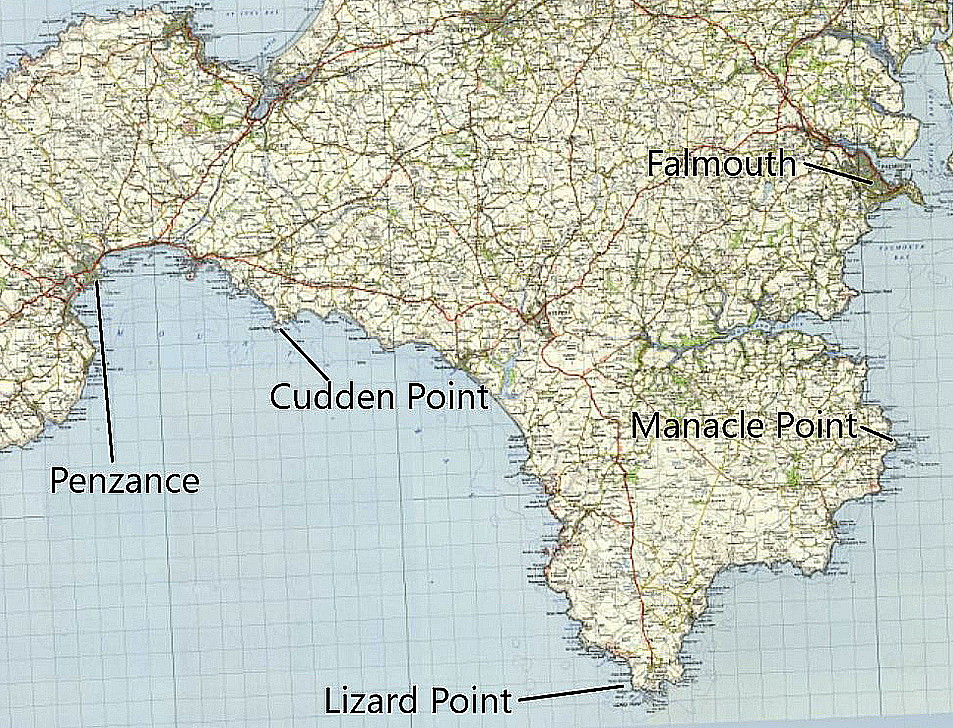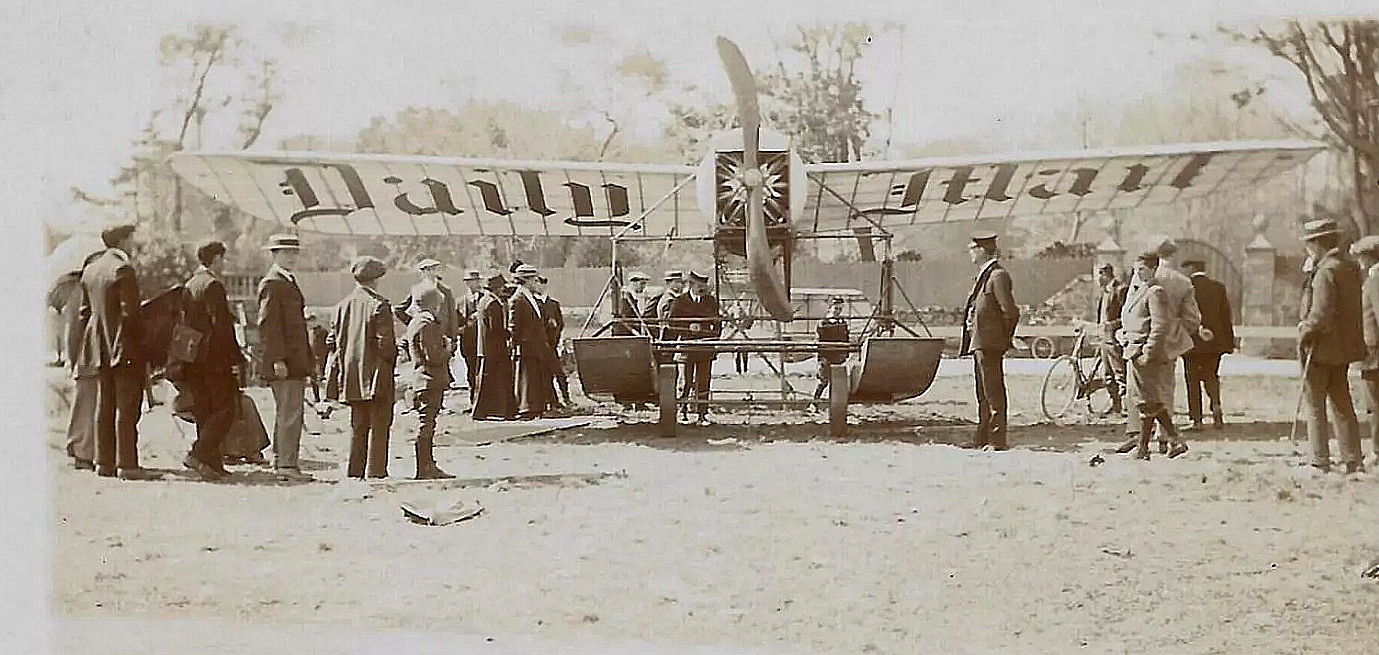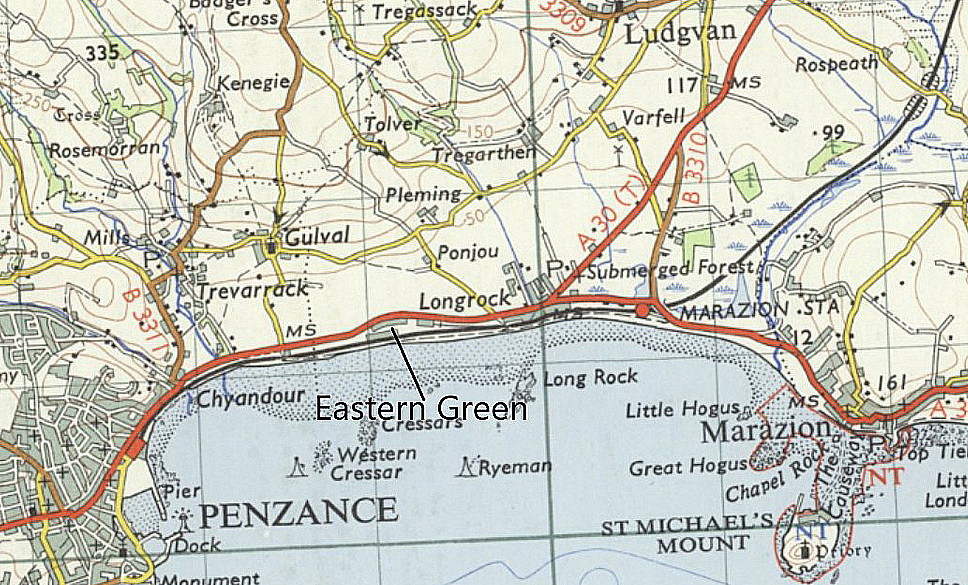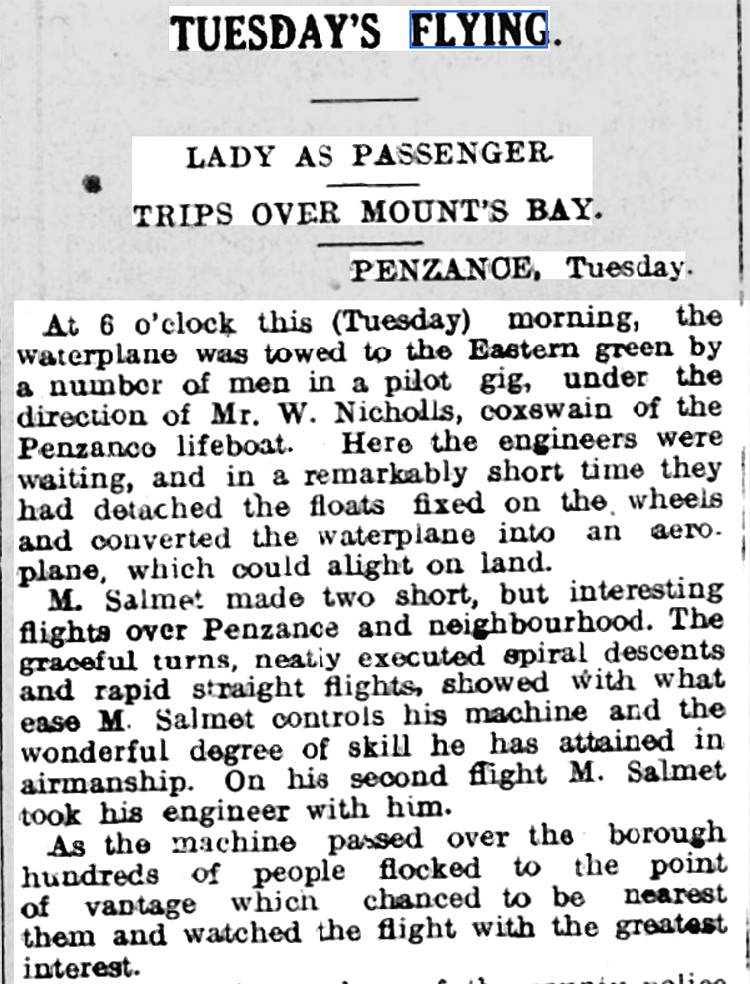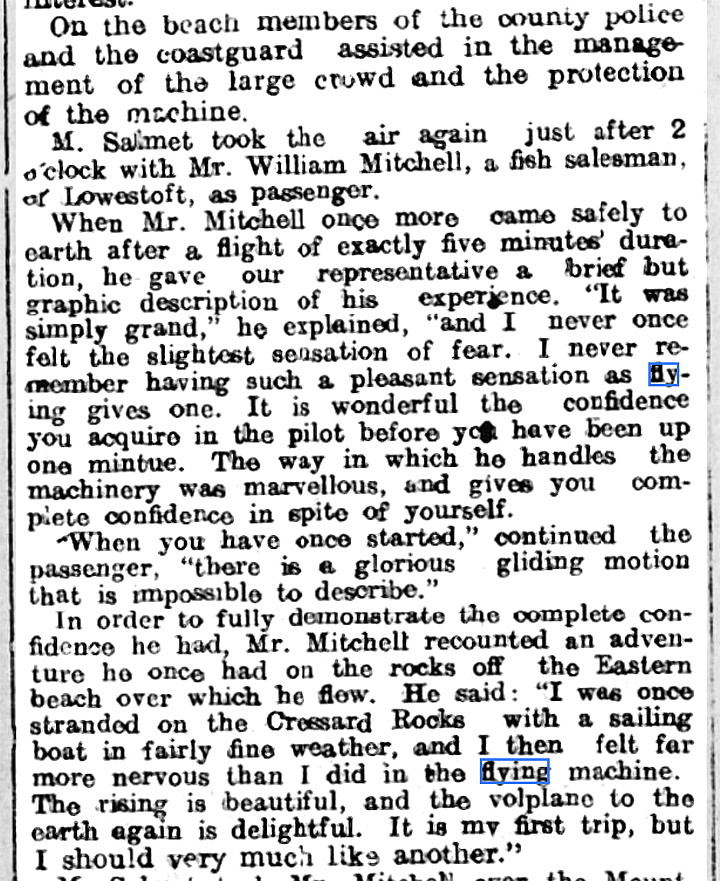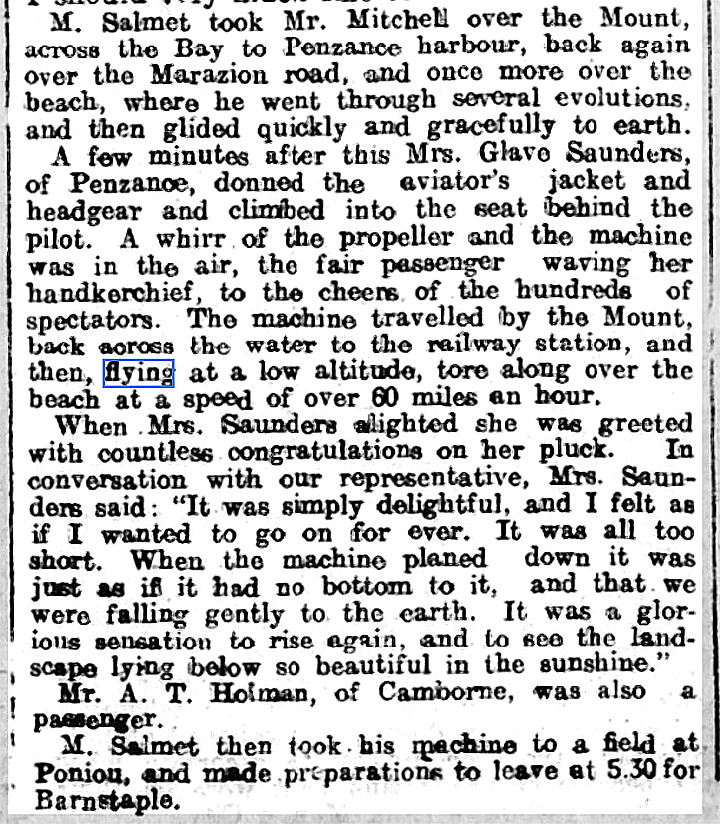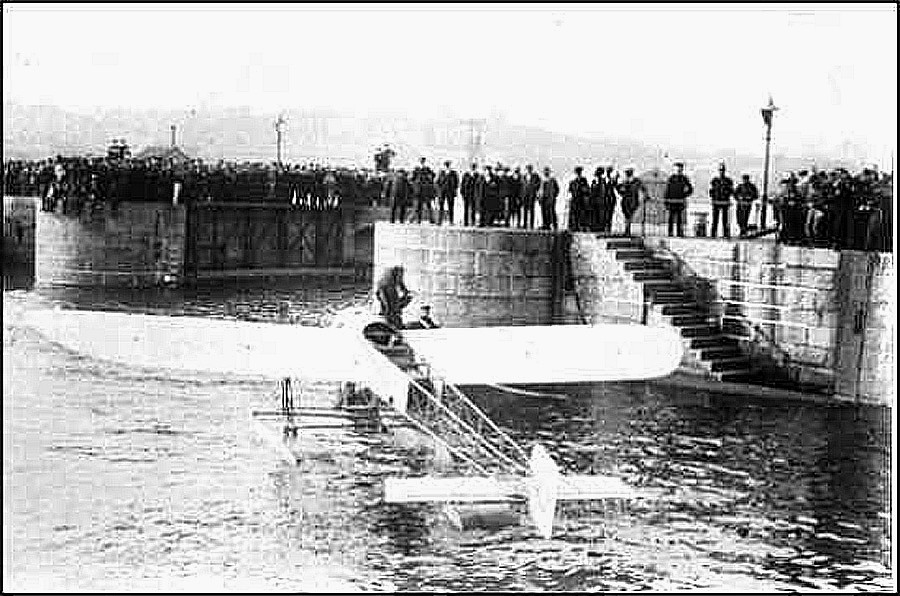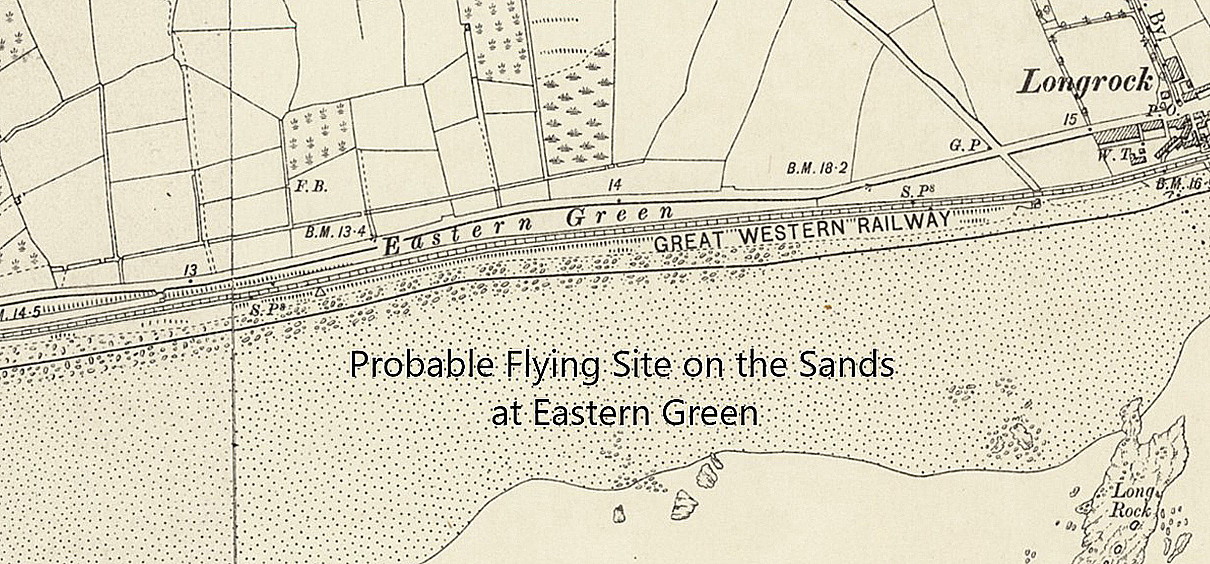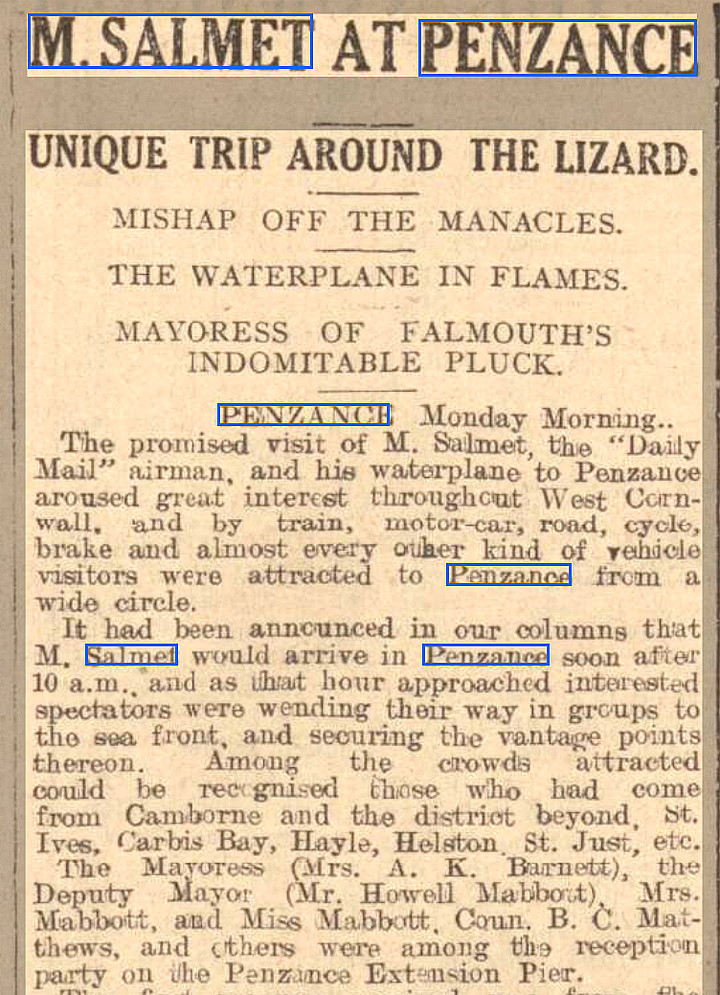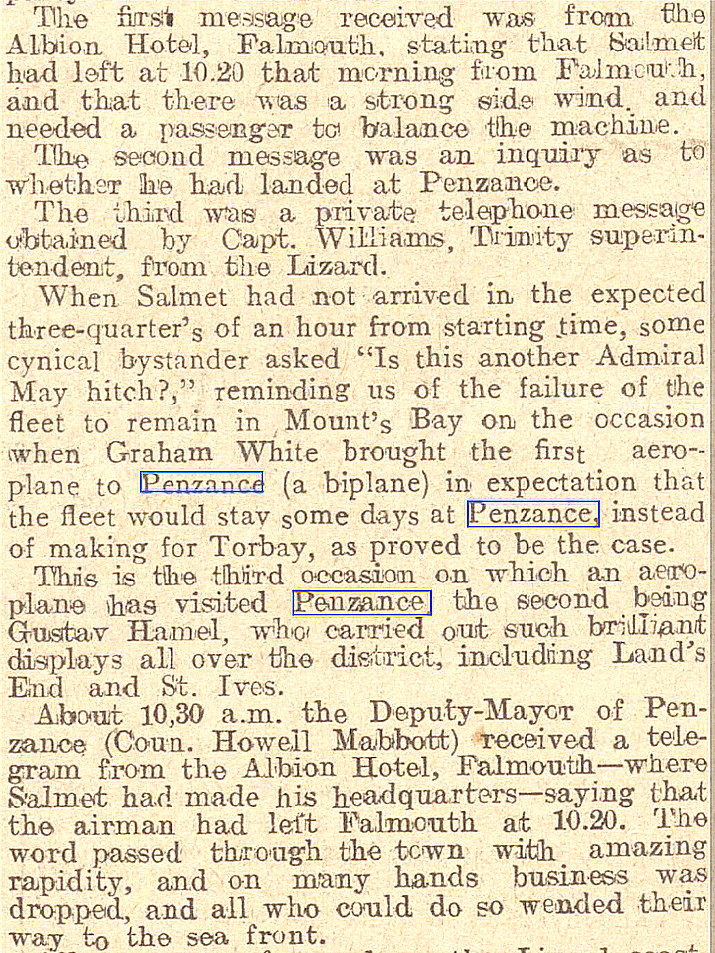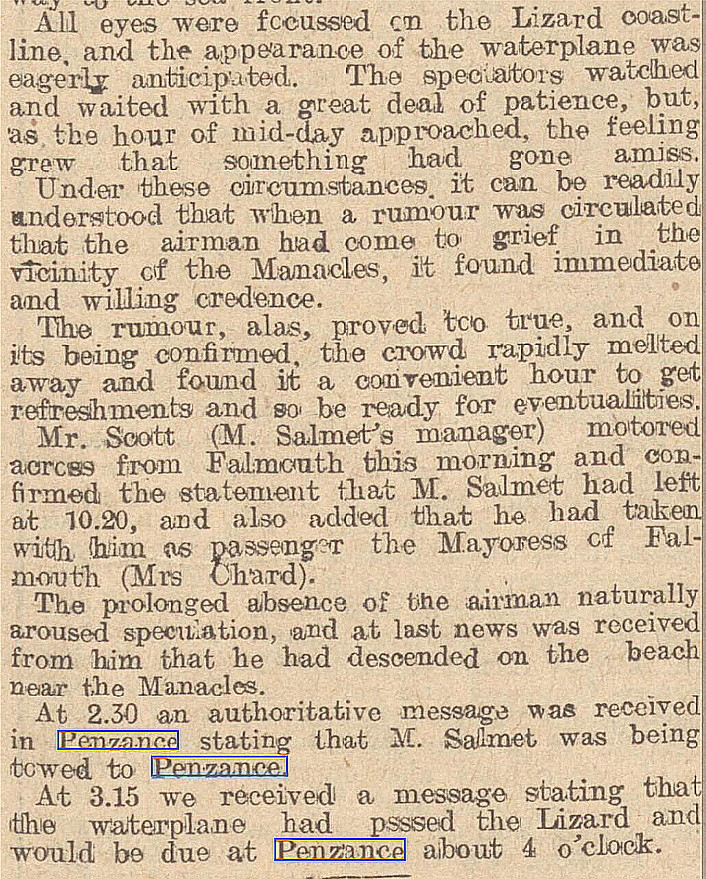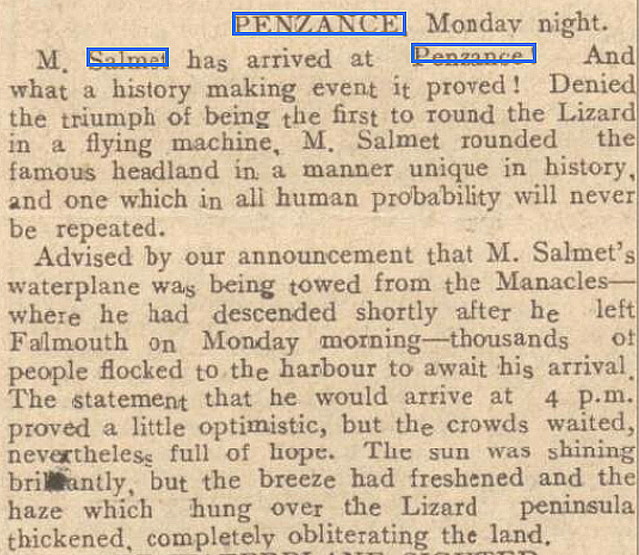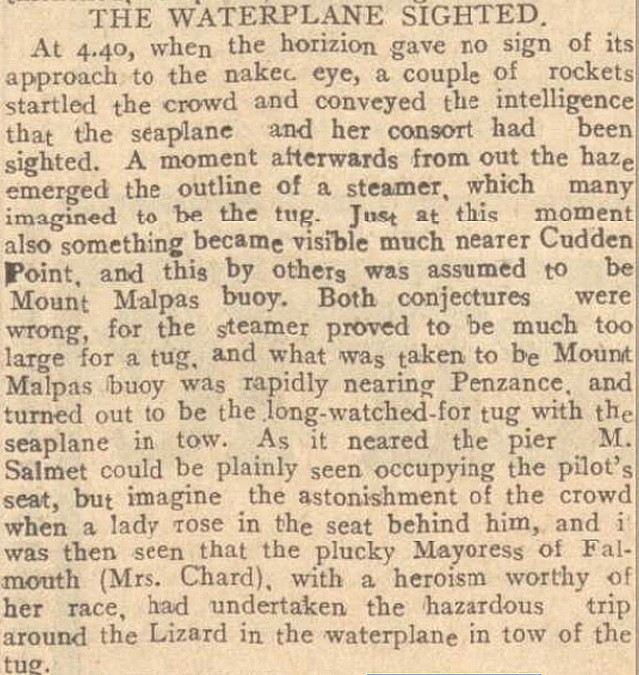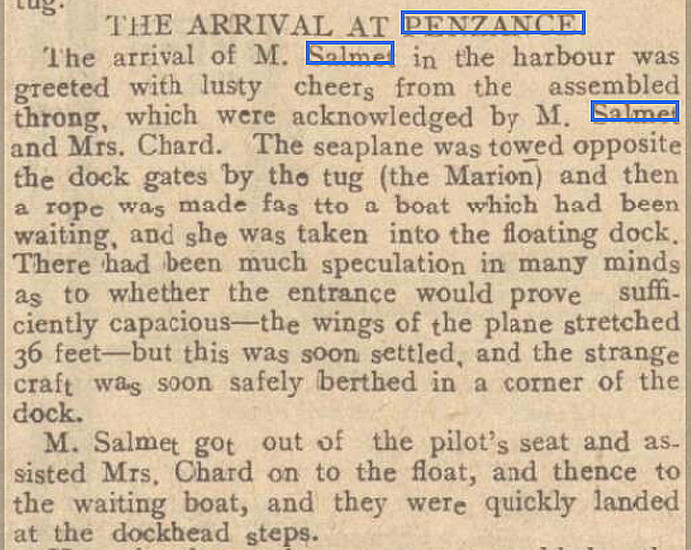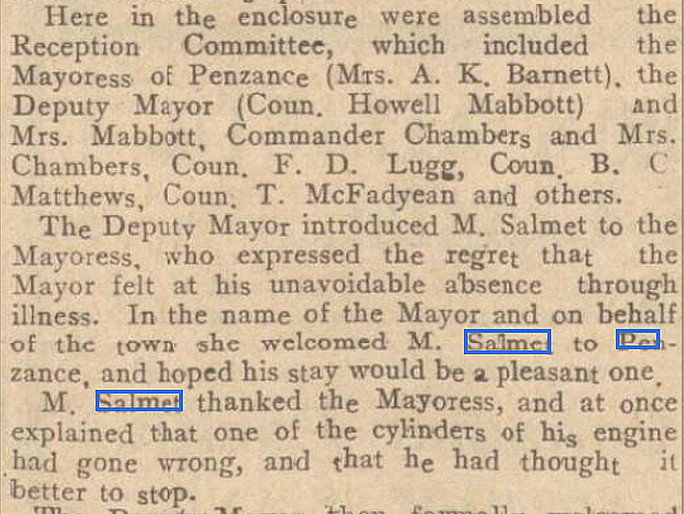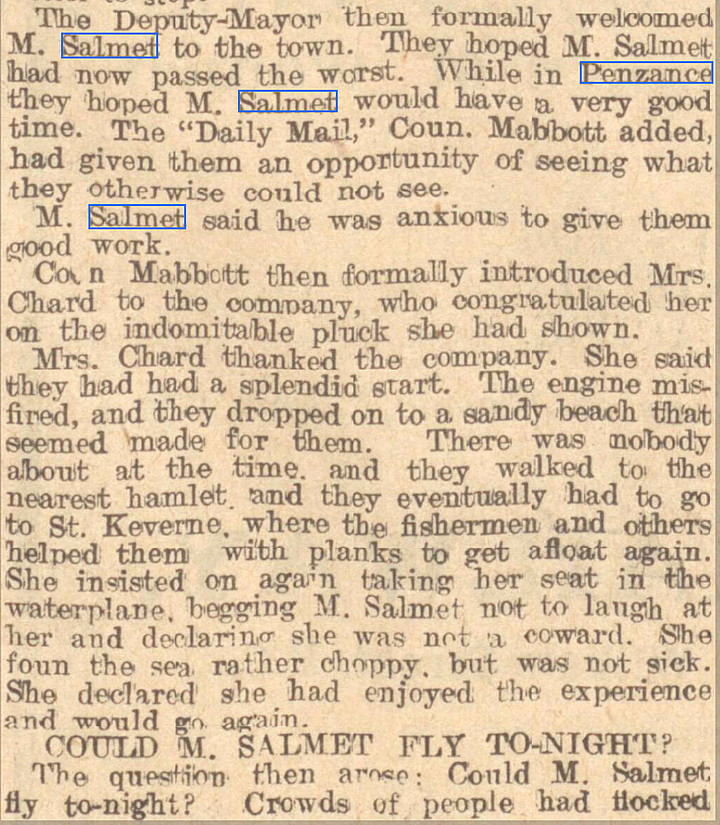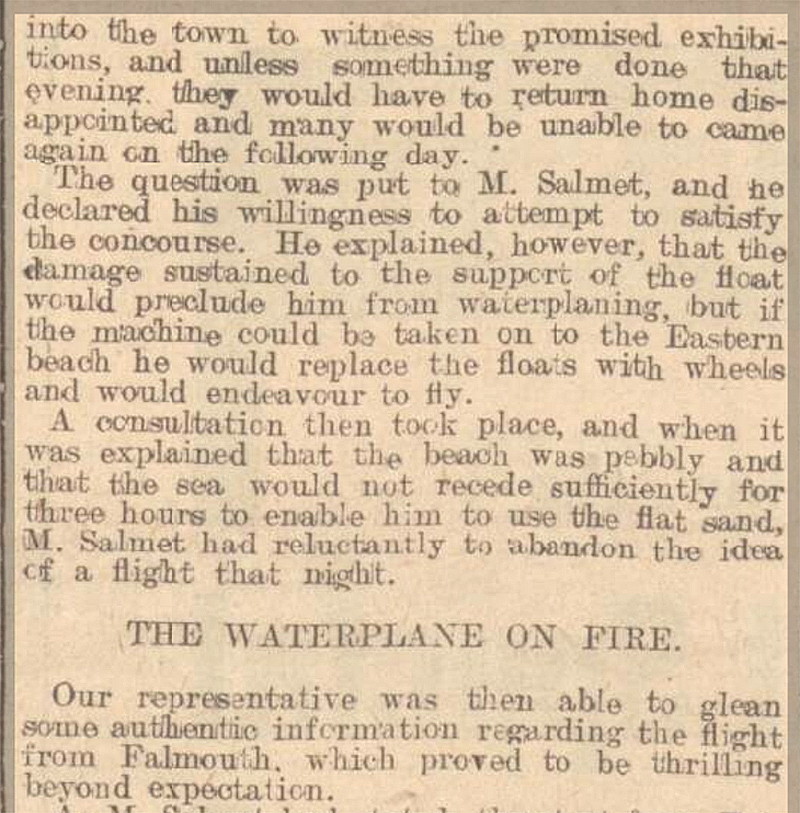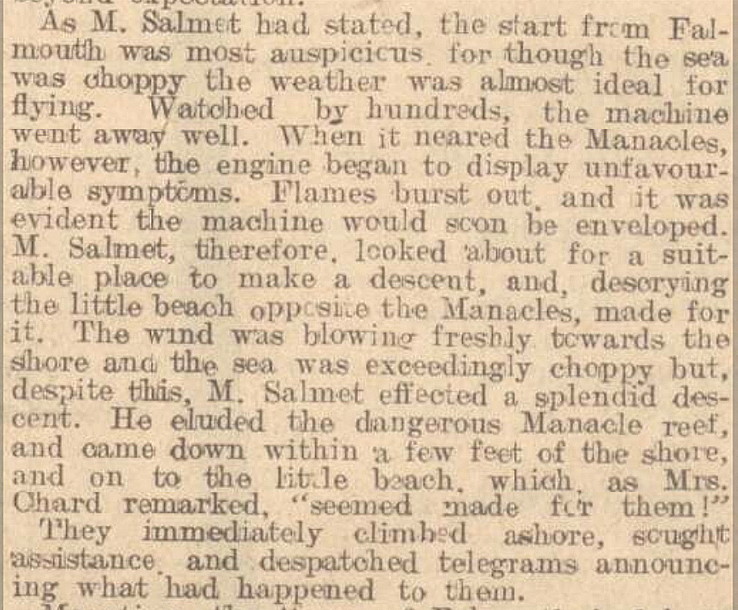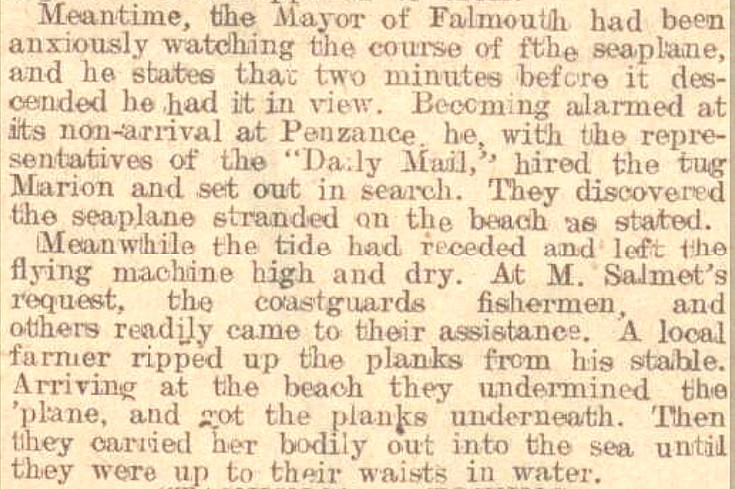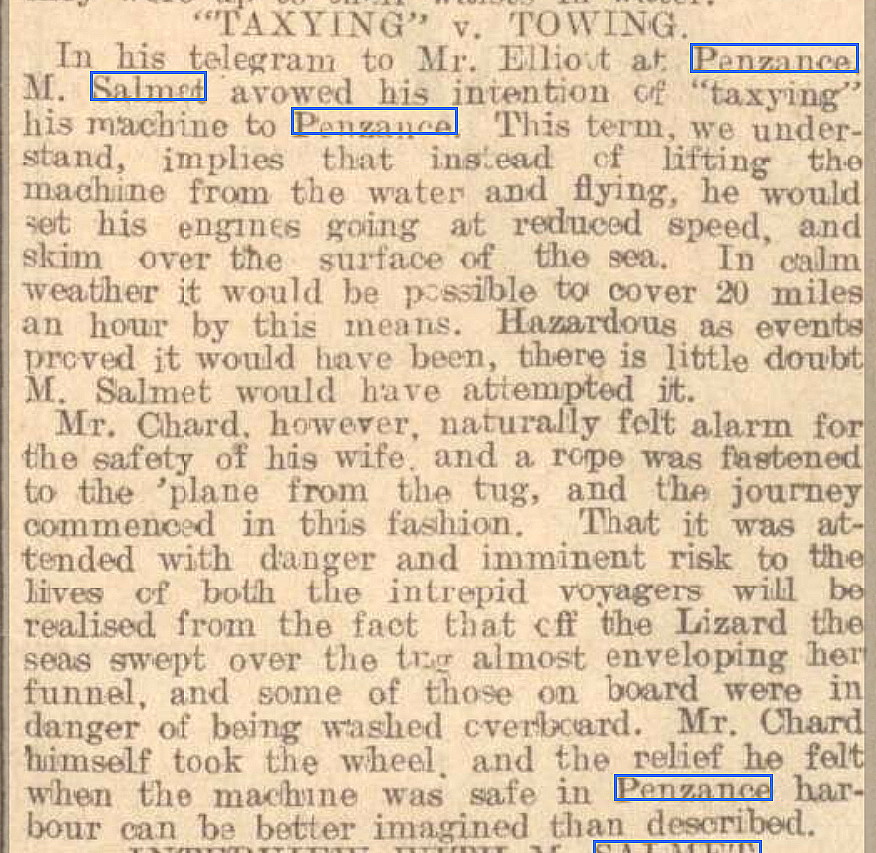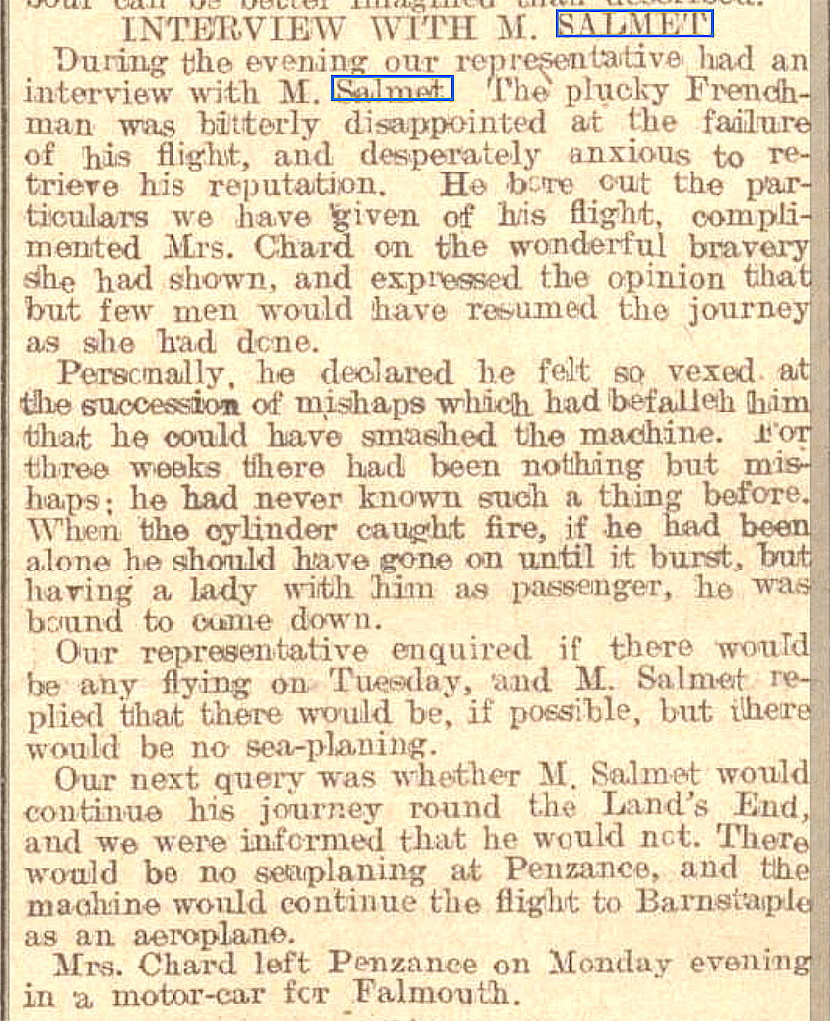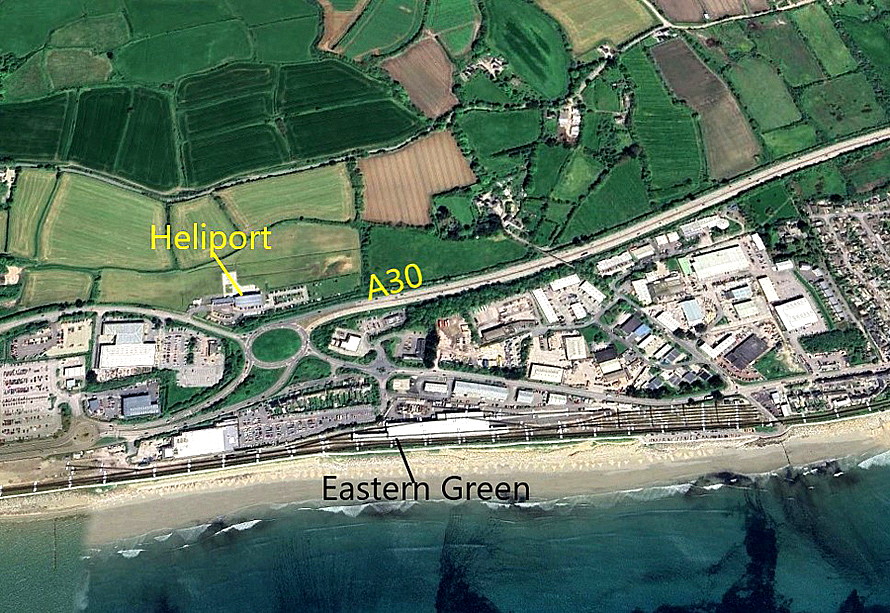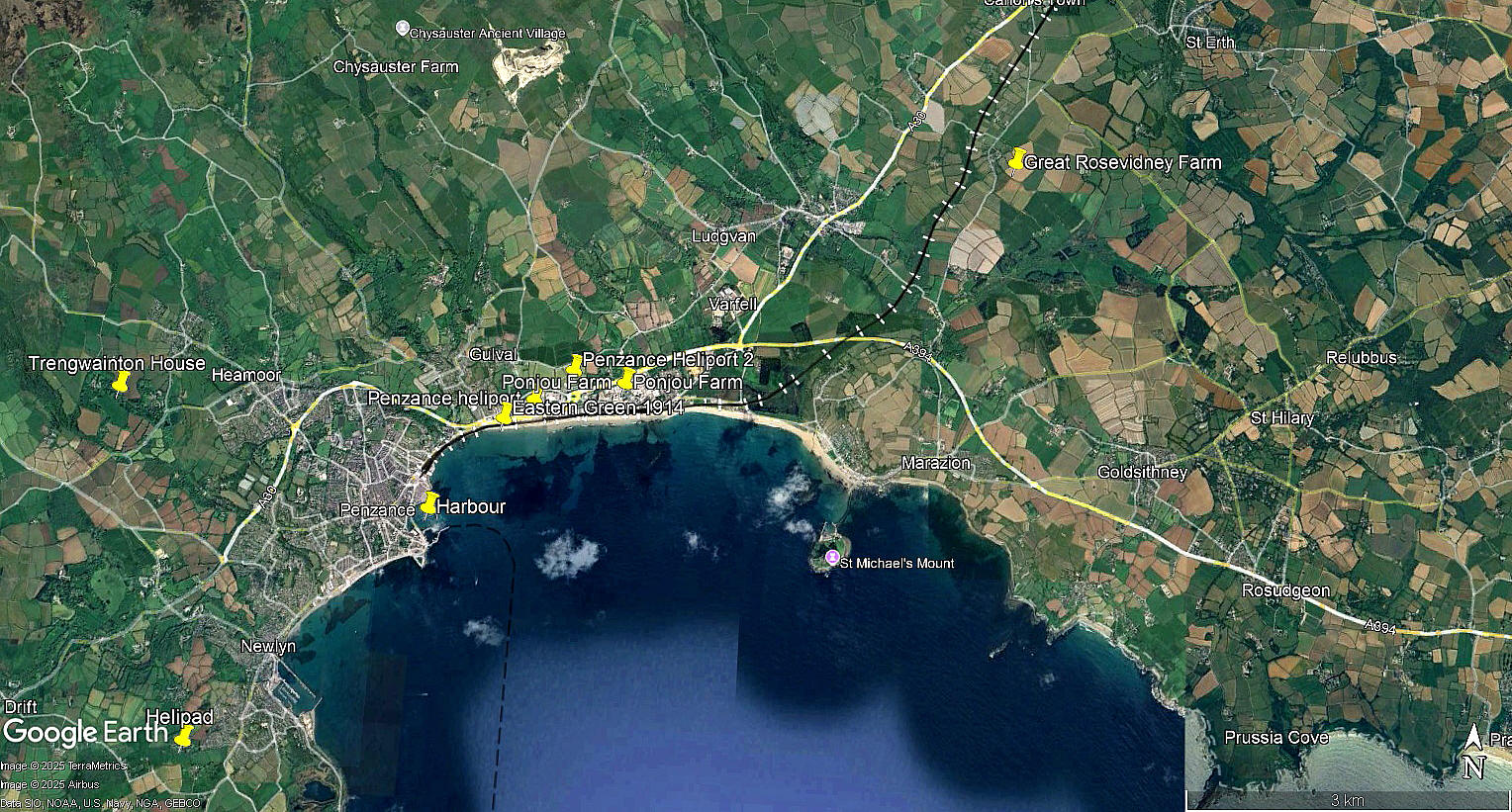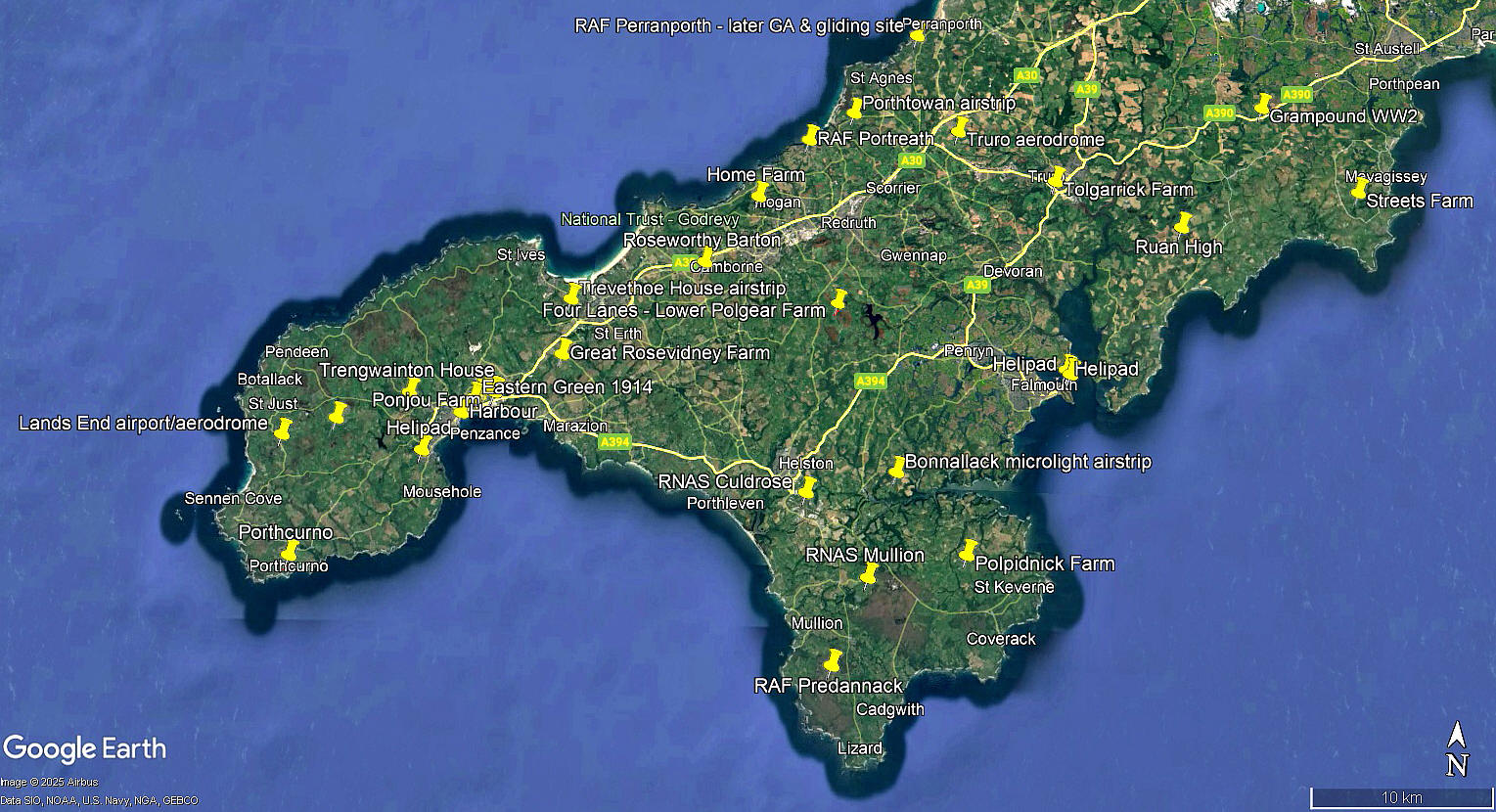Eastern Green
EASTERN GREEN: Temporary Landing Ground
Operated by: Henri Salmet
Location: Just S of the A30, east of Penzance town centre
Period of operation: 28th April 1914
A MICHAEL T HOLDER GALLERY
We have Mike Holder, a great friend of this 'Guide', for discovering evidence describing what went wrong on this flight by Henri Salmet from Falmouth to Penzance in April 1914. I had found snippets of information about Salmet visiting Penzance via Falmouth, but had not found anything describing the story of what a most unusual adventure for Salmet, (and his passenger!), this turned out to be. Quite possibly in its own way an unique event in British aviation history? Towing a stricken seaplane over such a long distance. From Manacle Point on the extreme NE side of the Lizard Peninsula, via Lizard Point to Penzance. To me it defies belief. Why not just tow it back to Falmouth? But.....we need to bear in mind that a huge crowd had assembled in Penzance to greet the arrival.
In the event, after the floatplane was towed into the dock at Penzance, it was later towed by sea to the beach at EASTERN GREEN, to be converted back onto wheels. Then, after making his displays, his Bléroit was then positioned to a field just further north before he embarked to fly to BARNSTAPLE.
Photo One is from Devon Live and although the location is not known it is a great picture of the Blériot on floats.
Article One was published in the Cornish Telegraph on the 30th April 1914.
Photo Two of Salmet in the Penzance dock was published in Early Aviators. Photo Three, also of Salmet in the Penzance dock, is from Pictures Penzance.
AND NOW FOR THE MOST DETAILED ACCOUNT
This account was published in The Cornishman, also on the 30th April 1914. It has been sub-divided into several sections to make it easier to read.
The local area and area views are from my Google Earth © derived database.
NOTES: Although those early aeroplanes are invariably described as being frail, which most of the airframe was of course being made largely of slender pieces of wood, the main attachment points were remarkably strong. Those old craftsmen building those machines knew a lot. This being amply illustrated in this story. We do not seem to know exactly where the tow rope, or ropes, were connected, but I suspect, to the bottom of the front float struts? From the stories above it seems some damage was caused to the float attachment points, but have to say that I am astonished they survived that very long tow from Manacle Point to Penzance dock. A task they were most certainly not designed for. This said, Henri Salmet had had considerable experience flying Blériot machines, often in very bad weather and turbulence during his previous tours of the U.K. starting in 1912, and so he had amassed considerable knowledge about what the structure could withstand.
As an aside, regular visitors to this 'Guide' must have noticed that I have spent considerable amounts of time driving heavy trucks, and light aircraft, and one aspect of the engineering and design of both is very similar. Namely that they have to be very strong where needed, but also as light as possible, to maximise payload. And both can be easily damaged if coming into contact with something solid.
We'd love to hear from you, so please scroll down to leave a comment!
Leave a comment ...
Copyright (c) UK Airfield Guide















